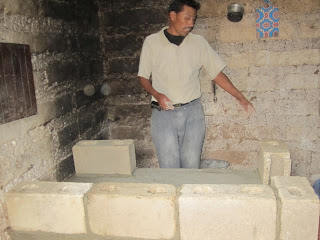One year ago today, I got up at 5 in Sumpango, stuffed my cat in a
tote bag, and stood in the back of a
packed bus for over three hours with my training host parents as they
accompanied me over the crazily curving roads to my site in Sololá. I had just
recovered from a violent food-borne illness, and was both eager and anxious to
start the chapter of Peace Corps Volunteer as I left behind my status as a Peace
Corps Trainee.
Since then I have lived in four different housing situations with
two additional host families in two departments and have spent over 150 hours
studying two different Mayan languages.
I have worked in a school, a health post, in homes, kitchens, gardens,
and a cooperative. I have been in turns lonely,
bored, eager, cynical, frightened, euphoric, determined, content, pessimistic,
apathetic, inspired, and a host of other states of being. I have improved my tortilla-making skills, my
cockroach killing techniques, and my ability to endure being the center of
attention. I have made new friends in my
Guatemalan communities, have strengthened Volunteer friendships, and been
incredibly supported by friends and family from home through calls, cards, and even
some visitors.





















